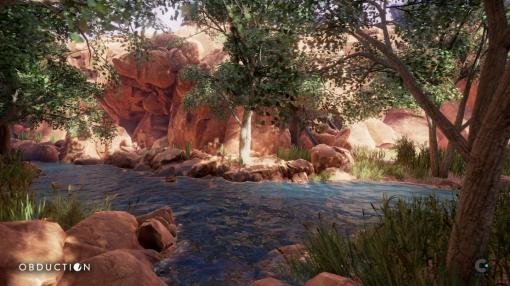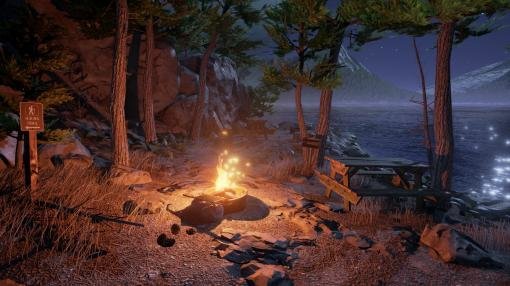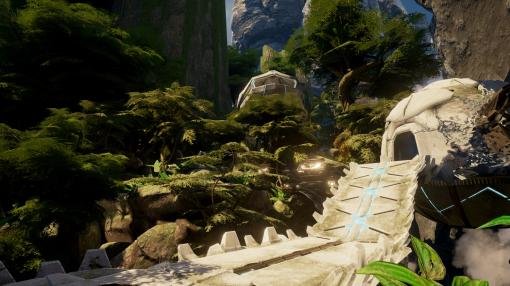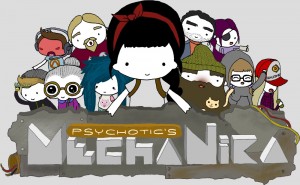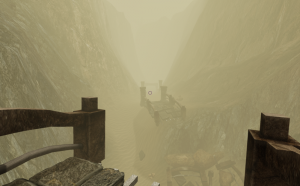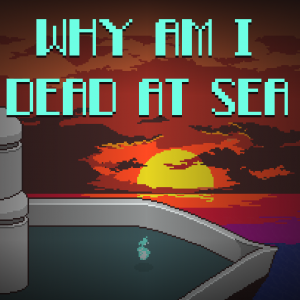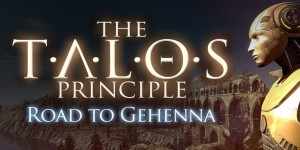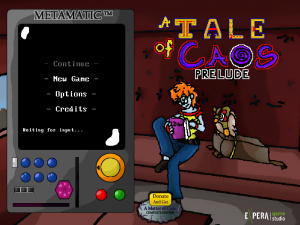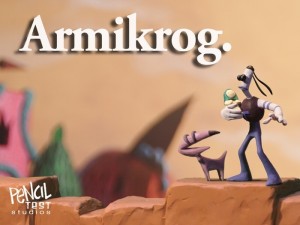Rand Miller - Obduction interview

Over two decades ago, a little developer named Cyan rocked the gaming world with the release of Myst, a first-person puzzle-adventure that took full advantage of the burgeoning CD-ROM technology and broke PC sales records in the process. It was one of those extremely rare titles that truly revolutionized the genre, forever changing the way players could experience a virtual world. Now Cyan is back, not with a new Myst installment, but an adventure that shares more than a few similarities with its iconic spiritual predecessor. With the successfully crowdfunded Obduction just about ready for release (for real this time), we caught up with studio co-founder and legendary game designer Rand Miller to talk about the new game and how far the genre has come.
Ingmar Böke: Hello Rand, it’s a real pleasure to welcome you to Adventure Gamers. I’m sure that a lot of our readers can’t wait to get their hands on Obduction, so let’s find out more about it… First of all, for those who aren’t as fully familiar with your new project just yet, please give us an idea of the basic idea behind Obduction in terms of story and gameplay.
Rand Miller: Without giving too much away, Obduction is all about being abducted. What if you were out in the woods, minding your own business, when suddenly a strange organic artifact whisks you away to another world.
Ingmar: In your Kickstarter video you described Obduction as a "spiritual successor to the experience that Myst provided." While Obduction is not Myst 6, and is meant to stand on its own feet, what would you say are both the similarities and differences between the two?
Rand: Obduction has more in common with the original Myst than with any sequel. Let me explain… The original Myst provided an experience for players that was completely unknown. When players landed on the dock they had no idea what or who they would find. They had no history, no information, no clues. Any sequels to Myst couldn’t claim that same level of unique experience, since the player knew a bit of the history – having played the previous game(s). With Obduction being a new story, it affords the player the potential for the same feeling that Myst did: you’re plopped into a situation with no knowledge of what came before. It’s a fresh new experience.
We considered doing a Myst universe experience (sequel or reboot), but we were all more motivated by the idea of something completely new.
Ingmar: "Accessibility" is a word that’s used often when it comes to games these days. Would you say that puzzles in Obduction are perhaps easier than in your previous games?
 |
Getting to the root of Rand Miller |
Rand: The puzzles are generally easier, but there are a few that have the potential to be a bit tougher. It’s a different world for puzzles now, with the “crowd mentality” of the internet always looking over a player's shoulder – begging to help. [grin] If a player can resist those voices they’ll find a similar experience to Myst as far as difficulty goes. Obduction puzzles benefit from us having a few more years of design experience. And as such I think we’ve gotten better at making the puzzles feel more like part of the story and environment.
Ingmar: Obduction will use more than just one interface. Can you explain the different control methods and means of interaction the game offers?
Obduction can be explored in a couple ways. Since it’s a realtime 3D game you can use standard gaming keyboard/mouse controls, or a game controller. But because we have a legacy of point and click, we’ve also built in that very simple interface, too. It’s a much less intimidating interface for players who aren’t familiar with the current standard in gaming controls.
Ingmar: You’re creating the game using the Unreal 4 engine. What’s your experience been using that engine over some of the ones you’ve used previously?
Rand: UE4 has definitely amplified our abilities. We have a very small team considering the scale of the game we built, and we couldn’t have pulled it off without UE4. With that said, we have some very smart people on the team who were able to modify and adjust the engine to our will. We were able to create tools within the engine to allow much faster production without compromising the look and feel. Water flow is a good example: we built a tool that allows for flowing water to be “painted” into the environment. So streams, rivers, and pools were accomplished quickly and realistically.
Ingmar: You’re designing this game for virtual reality as well as standard hardware. What advantages does VR technology offer for the kind of experience you’re aiming for?
 |
Obduction design meeting for Cyan with visiting French artist Stephan Martiniere (wearing hat) |
Rand: We’ve found that the most impressive thing that VR brings is a sense of presence for the player. When you explore the worlds of Obduction on a monitor they are beautiful and intriguing, but in VR the player gets a sense of their place in the space – their scale and the scale of the place around them. It adds another level of immersion that actually slows down the exploration, because everything around seems so much more interesting. When the player looks up at a canyon wall they get a real sense of how high the cliffs – which is something that doesn’t come through dramatically on a monitor.
Ingmar: How do you think VR will evolve in the coming years, and how might that impact the design of your games in the future?
Rand: It definitely will impact our design. Obduction was designed for both non-VR and VR, so the interaction with the world was built to work for both. But as VR becomes more popular it’s possible that we can design specifically for that platform – making the interaction and exploration tuned for the deeper immersion and interface. Even touch controls allow for completely different kinds of puzzles and equipment where the player feels much more like they’re manipulating real parts of the world.
Ingmar: It was pretty big news for your longtime fans when you announced that Robyn and Ryan Miller had agreed to participate in Obduction. Please give us an idea of their involvement.
 |
Robyn and Rand Miller on set at Cyan's own studio |
Rand: It was fun bringing my brothers back in for various aspects of Obduction. Robyn is much more comfortable acting then I am, and did a great job. And his music sets the emotions for the environments in such an amazing way. And Ryan’s story input allowed us to make some important and dramatic changes to the storyline early on.
Ingmar: As a huge fan of live action in games, I’m very happy to see it included in Obduction. What’s your take on FMV these days? In what ways do your games benefit from live performances?
Rand: The live action is hard to beat, but it presents its own challenges. The nice part is not having to fight the “uncanny valley” battle – players will see real people in the game. The tricky parts are designing the game so that interacting with the live action characters feels natural and organic. And of course we also had to film the live action in 3D so that the characters had depth in VR. There’s no doubt that live action captures so much more of the subtleties of real human interaction.
Ingmar: You witnessed the rise and fall of FMV back in the '90s. What do you remember of that time, and how did you feel it about it while it was happening?
Rand: Some parts were exciting – seeing CG characters get better and better was incredibly interesting. Getting 90% human is incredible – but that last 10% is huge. So it was both amazing and somewhat frustrating. But both methods have their advantages and disadvantages.
Ingmar: Speaking of acting, there was talk of a Myst movie some time ago, but nothing seems to have come of it. Do you have any update for fans eagerly awaiting the possibility?
Rand: We’re still excited about the possibility, and we have some contracts in place that make it more likely than ever before. Keep your fingers crossed!
Ingmar: Several first-person exploration projects have arrived with interesting ideas in recent years. Are there any that have particularly impressed you? And did any of them influence your own approach to designing this game?
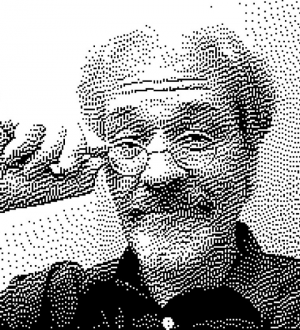 |
A bit more of Rand (many bits, actually) |
Rand: I love the recent surge in indie experiences. There’s a renewed surge in creative interactive innovation. And we’ve been inspired by all of it. From more artistic environments like Dear Esther, to rich stories like Gone Home, and pitch perfect puzzle worlds like The Witness, and cinematically stylized experiences like Firewatch – just to name a few. They all have pieces that inspire us and amaze us.
Ingmar: How would you say you’ve evolved as a game maker over the years?
Rand: I think the most important thing I’ve realized is that connection is king. Giving the player a positive experience in the kind of rich, full worlds that we love to build requires that the player pay attention to details and that the details are there to make the connection. Whether it’s connections that allow the story to form in their head, or connections that allow them to put together puzzles to move forward – building those connections is difficult, but mandatory for a great experience.
Ingmar: Myst lore has grown very complex over the years. Is your goal to make Obduction the introduction to a whole new universe, with its own rich history, that players will keep exploring in a new series of games? If so, how does that impact the potential future of the Myst franchise?
Rand: I’ve described it this way… I love my house. I’ve been living in it for years. It’s comfortable and understood and close. But sometimes it’s necessary to get out of the house – to take a trip and experience something new. It doesn’t mean you don’t ever come home. It means that you come home refreshed – with new ideas, new friends, and new inspiration. You still have your house, but you also have a new place that has become part of your story.
Ingmar: Obduction was (at least partly) funded by fans through Kickstarter. What was the crowdfunding experience like for you, and what are some of the rewards and challenges in developing a game while interacting directly with the community?
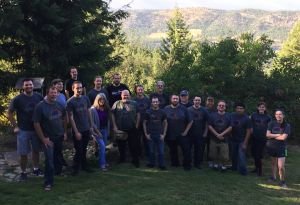 |
The Obduction team in Rand's scenic back yard |
Rand: Crowdfunding was amazing. It was so rewarding. Even though we have many more people involved than with a traditional publishing deal, it felt like we were working with thousands of new friends as opposed to a half dozen new bosses. Our supporters have been just that – supportive and encouraging, even as we’ve slipped our schedule a couple times. We’ve got the best fans in the world. We couldn’t have done this without them.
Ingmar: Can you imagine using Kickstarter again when it’s time to fund your next project?
Rand: Sure. It was a great experience. With Obduction wrapping up, its success may open up other doors for future projects as well. But the future is certainly unpredictable, and definitely has not yet been written. [wink]
Ingmar: Thanks so much for taking time for us, Rand. We wish you all the very best with Obduction, and are looking forward to many more years to come for Cyan Worlds!


